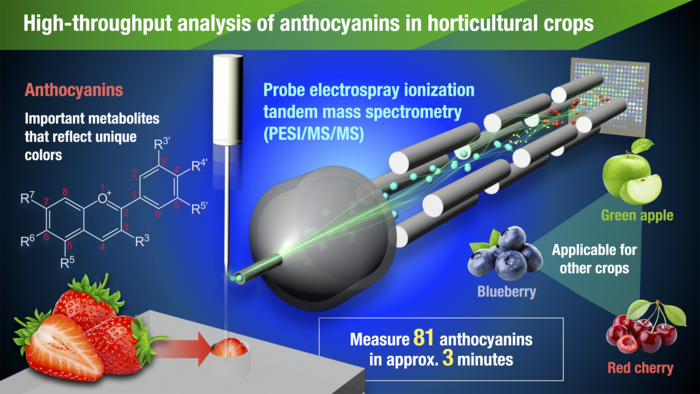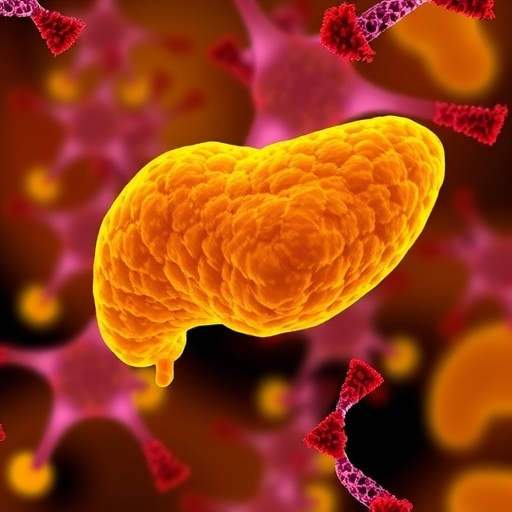Anthocyanins are compounds related to the color of plants. They also have beneficial effects on human health and are used as a supplement. Various species of anthocyanins, divided by their molecular shape, are present in plants. Therefore, simple, and rapid, analytical techniques that can distinguish among these species in crops are necessary for breeding and quality assessment. A team of Nagoya University researchers in Japan has used a technique called probe electrospray ionization tandem mass spectrometry (PESI/MS/MS) to analyze anthocyanins in crops. Their results were published in the journal Horticulture Research.

Credit: Dr Issey Takahashi
Anthocyanins are compounds related to the color of plants. They also have beneficial effects on human health and are used as a supplement. Various species of anthocyanins, divided by their molecular shape, are present in plants. Therefore, simple, and rapid, analytical techniques that can distinguish among these species in crops are necessary for breeding and quality assessment. A team of Nagoya University researchers in Japan has used a technique called probe electrospray ionization tandem mass spectrometry (PESI/MS/MS) to analyze anthocyanins in crops. Their results were published in the journal Horticulture Research.
Conventionally, liquid chromatography and mass spectrometry are used to analyze anthocyanins. However, the conventional procedure requires considerable time and work in the pretreatment and chromatography step. Therefore, the team led by Associate Professor Katsuhiro Shiratake turned to the PESI/MS/MS technique that had previously been developed by another member of the team, Professor Kei Zaitsu. Prof. Zaitsu had originally developed the technique to analyze metabolites in living organs, such as the brains of mice. However, for the first time, the team used it for agricultural applications.
The PESI/MS/MS analysis is one ambient MS approach, and much simpler than the conventional approach, as sampling can be easily performed by sticking a probe needle into the sample. The compounds that adhere to the tip of the probe are then ionized using high-voltage electricity and analyzed by PESI/MS/MS. This method could be used to analyze compounds in organisms directly and is also minimally invasive. The group analyzed 16 types of fruits and vegetables and successfully detected 81 types of anthocyanins in only 3 minutes. They also found that their technique could detect anthocyanins in small areas of plants, such as achenes, tiny pips found on the skin of strawberries.
“This study suggests the applicability of PESI/MS/MS to the analysis of not only anthocyanins but also other plant metabolites,” said Shiratake. “Plant metabolites contribute to the quality of crops and their processed products, including their taste, aroma, color, and functionality. By applying PESI/MS/MS to metabolite analyzes of crops and foods, which were typically labor and time-consuming steps, we could dramatically simplify and accelerate the analysis.”
In the future, the team hopes to incorporate one of Prof. Zaitsu’s other platforms, called PiTMaP, which combines PESI/MS/MS with bioinformatics. They expect that this platform will allow them to analyze the targeted metabolites by PESI/MS/MS and analyze data using multivariate analysis and multiple comparisons in a short time. It is expected that the application of this platform on crops and foods will accelerate the analysis of compounds and metabolites that are important to crops and foods.
Journal
Horticulture Research
DOI
10.1093/hr/uhad039
Article Title
High-throughput analysis of anthocyanins in horticultural crops using probe electrospray ionization tandem mass spectrometry (PESI/MS/MS)
Article Publication Date
28-Feb-2023




